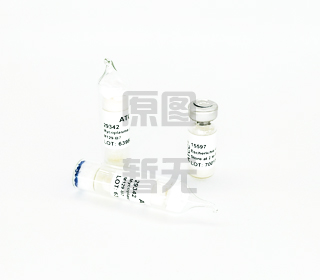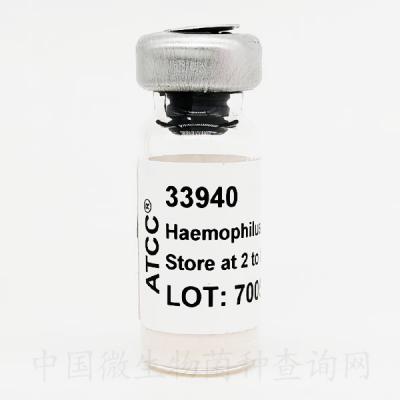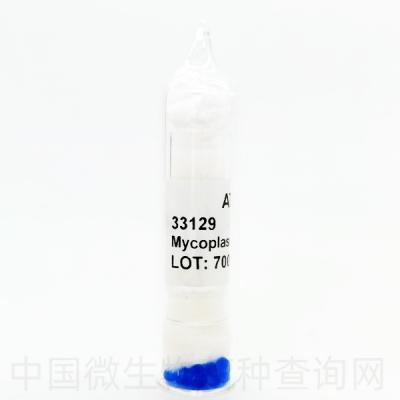
ATCC® Number:12857™
Organism: Crithidia fasciculata Leger
Designations: Wallace
Isolation: mosquito, Culex pipiens, St. Paul, MN, 1942
Depositors: HN Guttman
History: ATCC<<--HN Guttman<<--F.G. Wallace
Biosafety Level:1
Shipped: frozen
Growth Conditions: ATCCmedium 355: Crithidia mediumTemperature: 25.0°C Duration: axenic Protocol: ATCCNO: 11745 SPEC: See general instructions for thawing and storage of frozen material before proceeding. Add thawed contents to a single 16 x 125 mm glass screw-capped test tube of the appropriate medium. Incubate the culture vertically with the cap screwed on tightly. It is essential to establish cultures initially in small volumes. Once established, the culture can be scaled up to larger volumes. Vigorously agitate the culture and aseptically transfer 0.1 ml of culture to a fresh tube of medium weekly.
Permits/Forms: In addition to the MTA mentioned above, other ATCC and/or regulatory permits may be required for the transfer of this ATCC material. Anyone purchasing ATCC material is ultimately responsible for obtaining the permits. Please click here for information regarding the specific requirements for shipment to your location.
Applications: assay of biopterin [45903] assay of pteridines [5137] catabolizes tryptophan L-tryptophan [23848]
Comments: Ornithine-arginine metabolism [4786] Trypanosomatids from fruit [4818] Distribution of carbohydrate epitopes [4823] Inhibitors of ergosterol biosynthesis [4952] [5044] Riboprinting and taxonomy [23607] Properties of dihydrofolate reductase [23816] Monoclonal antibodies for identification [23826] Catabolism of tryptophan [23848] Adaptive use of N2-dimethyl-substituted pterins [23862] cyclopropane fatty acid [24043] Multiple distinct site-specific elements in miniexon arrays [24177] use of mutants in detecting genetic recombination [24190] endonuclease-generated fragments of K-DNA, esterase isoenzymes, surface proteins for species identification [24216] effect of temperature and osmolarity on growth [30421]
References: 4786: Figueiredo EN, et al. Enzymes of the ornithine-arginine metabolism of trypanosomatids of the genus Crithidia. J. Protozool. 25: 546-549, 1978. 4818: Conchon I, et al. Trypanosomatids, other than Phytomonas spp., isolated and cultured from fruit. J. Protozool. 36: 412-414, 1989. 4823: Gazzinelli RT, et al. Distribution of carbohydrates recognized by the lectins Euonymus europaeus and concanavalin A in monoxenic and heteroxenic trypanosomatids. J. Protozool. 38: 320-325, 1991. PubMed: 1787421 4952: J. Parasitol. 29: 196-205, 1943. 5044: Rahman MD, Pascal RA Jr.. Inhibitors of ergosterol biosynthesis and growth of the trypanosomatid protozoan Crithidia fasciculata. J. Biol. Chem. 265: 4989-4996, 1990. PubMed: 2318878 5137: Analytical microbiology. vol. 2New York: Academic Press; 1972. 23607: Clark CG. Riboprinting: A tool for the study of genetic diversity in microorganisms. J. Eukaryot. Microbiol. 44: 277-283, 1997. PubMed: 9225441 23816: Iwai K, et al. Purification and properties of dihydrofolate reductase from Crithidia fasciculata. Agric. Biol. Chem. 45: 113-120, 1981. 23824: Goncanlves De Lima VM, et al. Comparison of six isoenzymes from 10 species of Crithidia. J. Protozool. 29: 397-401, 1982. 23826: Teixeira MM, Camargo EP. Monoclonal antibodies for the identification of trypanosomatids of the genus Phytomonas. J. Protozool. 36: 262-264, 1989. 23843: Teixeira MM, et al. Characterization of the target antigens of Phytomonas-specific monoclonal antibodies. J. Eukaryot. Microbiol. 42: 232-237, 1995. 23848: Seed JR, et al. The catabolism of Tryptophan to indole-3-ethanol by Crithidia fasciculata and Phytomonas davidi. J. Protozool. 32: 20-25, 1985. 23862: Ziegler I, et al. Adaptive use of N2-Dimethyl-substituted pterins by cultures of Crithidia fasciculata. J. Protozool. 28: 354-357, 1981. 24043: Fish WR, et al. The cyclopropane fatty acid of trypanosomatids. Mol. Biochem. Parasitol. 3: 103-115, 1981. PubMed: 7254247 24177: Teng SC, et al. A new non-LTR retrotransposon provides evidence for multiple distinct site-specific elements in Crithidia fasciculata miniexon arrays. Nucleic Acids Res. 23: 2929-2936, 1995. PubMed: 7659515 24190: Glassberg J, et al. Isolation and partial characterization of mutants of the trypanosomatid Crithidia fasciculata and their use in detecting genetic recombination. J. Protozool. 32: 118-125, 1985. PubMed: 3857343 24216: Camargo EP, et al. Electrophoretic analysis of endonuclease-generated fragments of k-DNA, of esterase isoenzymes, and of surface proteins as aids for species identification of insect trypanosomatids. J. Protozool. 29: 251-258, 1982. PubMed: 6284925 30421: Da Silva JB, Roitman I. Effect of temperature and osmolarity on growth of Crithidia fasciculata, Crithidia hutneri, Crithidia thermophila, and Herpetomonas samuelpessoai. J. Eukaryot. Microbiol. 29: 269-272, 1982. 32938: Fernandes O, et al. Mini-exon gene sequences define six groups within the genus Crithidia. J. Eukaryot. Microbiol. 44: 535-539, 1997. PubMed: 9435125 34222: Cho J, Eichinger D. Crithidia fasciculata induces encystation of Entamoeba invadens in a galactose-dependent manner. J. Parasitol. 84: 705-710, 1998. PubMed: 9714198 45903: Baker H, et al. Biopterin content of human and rat fluids and tissues determined protozoologically. Am. J. Clin. Nutr. 27: 1247-1253, 1974. PubMed: 4447093





